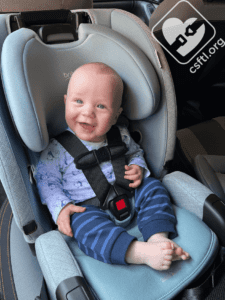2025 Infiniti QX80 First Drive Review: So close to being great

NAPA, Calif. – Confession time. I kind of forgot that the Infiniti QX80 exists. Sure, it’s gotten a refresh or two in the past few years, but it’s essentially been the same big ol’ three-row SUV since 2010. I’m pretty sure I used to call it Fudgie the Whale. Or maybe it was Pudgie the Whale. Like I said, it’s been a minute.
Now I’ve gotten a taste of the 2025 QX80 and hey, what do you know, there is a lot to like. The third-generation of the body-on-frame SUV goes big on tech, style and comfort, making it a respectable triple into the right-center gap. However, its ride quality keeps the QX80 from being a home run.
Fudgie’s V8 was nixed in favor of a 3.5-liter twin-turbo V6 good for 450 horsepower and 516 pound-feet of torque. Sure, it doesn’t sound quite as good as the older powerplant, but it produces more power and better fuel economy to boot – 18 mpg combined with rear-wheel drive and 17 with four-wheel drive. The old one managed only 15 mpg with four-wheel drive. With low-mpg numbers like these, that’s actually a huge difference. The new turbo V6 is well-mated to a nine-speed automatic transmission, putting the power down to the rear wheels as standard in Pure and Luxe trims, or all four wheels as an option with those trims or as standard with the higher Sensory and Autograph.
There are no complaints about power delivery. It has more than enough grunt for merging and the transmission downshifts readily for easy passing. There are five drive modes as well as a Personal setting, but I spend my time alternating between Standard and Sport. The latter tightens up the steering and powertrain, allowing the SUV to hustle fairly well on a twisty road without much body roll. It’s no Mercedes-AMG GLS, but starting at under $85,000 including destination, it’s not nearly as expensive either.
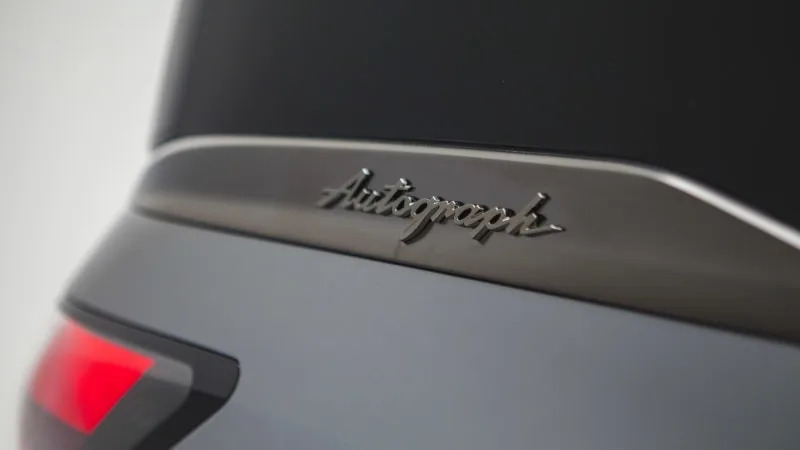
It’s when you’re just toddling around town that the ride quality becomes a problem. All but the base Pure trim comes equipped with an “Electronic Air Suspension” and “Dynamic Digital Suspension,” the latter function monitoring the QX80’s motions to electronically apply damping forces. This isn’t necessarily anything new in the automotive world, but other manufacturers just do it better. Up and down motions are well-controlled, but I’ve been in row boats with more side-to-side stability. My head gets tossed around like I’m piloting a Jeep on a dusty back road, and all I’m doing is driving the paved streets of Napa Valley, California.
I’d be curious to drive the base Pure model without the Digital Dynamic Suspension to see if the standard coil-spring suspension makes any difference. Unfortunately, there weren’t any available at this press event. As it stands, I wouldn’t buy an SUV that makes me vaguely queasy, let alone $112,590 for the Autograph trim I drove.
It’s a shame too, because there are so many other things that Infiniti got so very right. The styling is 100% on point and I’d put it up next to the Range Rover or Cadillac Escalade any day. Infiniti says the grille was inspired by a bamboo forest – if they say so, but the QX80 has a very handsome face. The segmented daytime running lights are up high and narrow while the headlamps are lower, forming a bit of a dimple on either side of the grille. There is even some cool negative space going on here as part of the aerodynamics, funneling air around the wheel wells.
Twenty-inch wheels are the smallest you’ll get, but the 22s on my tester look right at home on the QX80. Door handles are flush with the body, popping out when you approach the rig, but it’s the rear end that really seals the deal here. The horizontal LED light bar spans the full 83 inches of width, and it’s segmented like the running lights up front. However, the bar is narrower in the middle, giving it a cool, edgy look. Strong work, Infiniti.
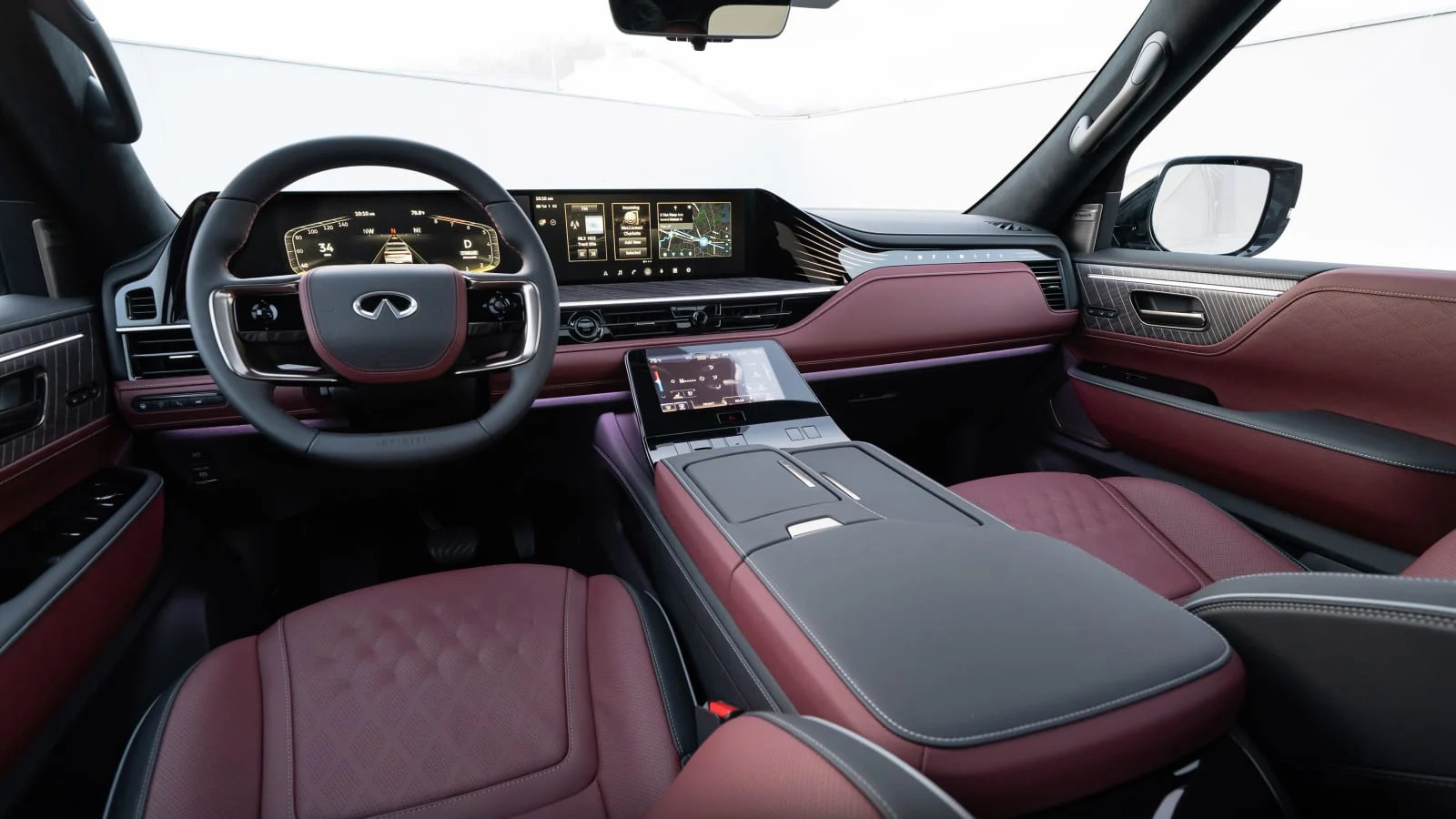
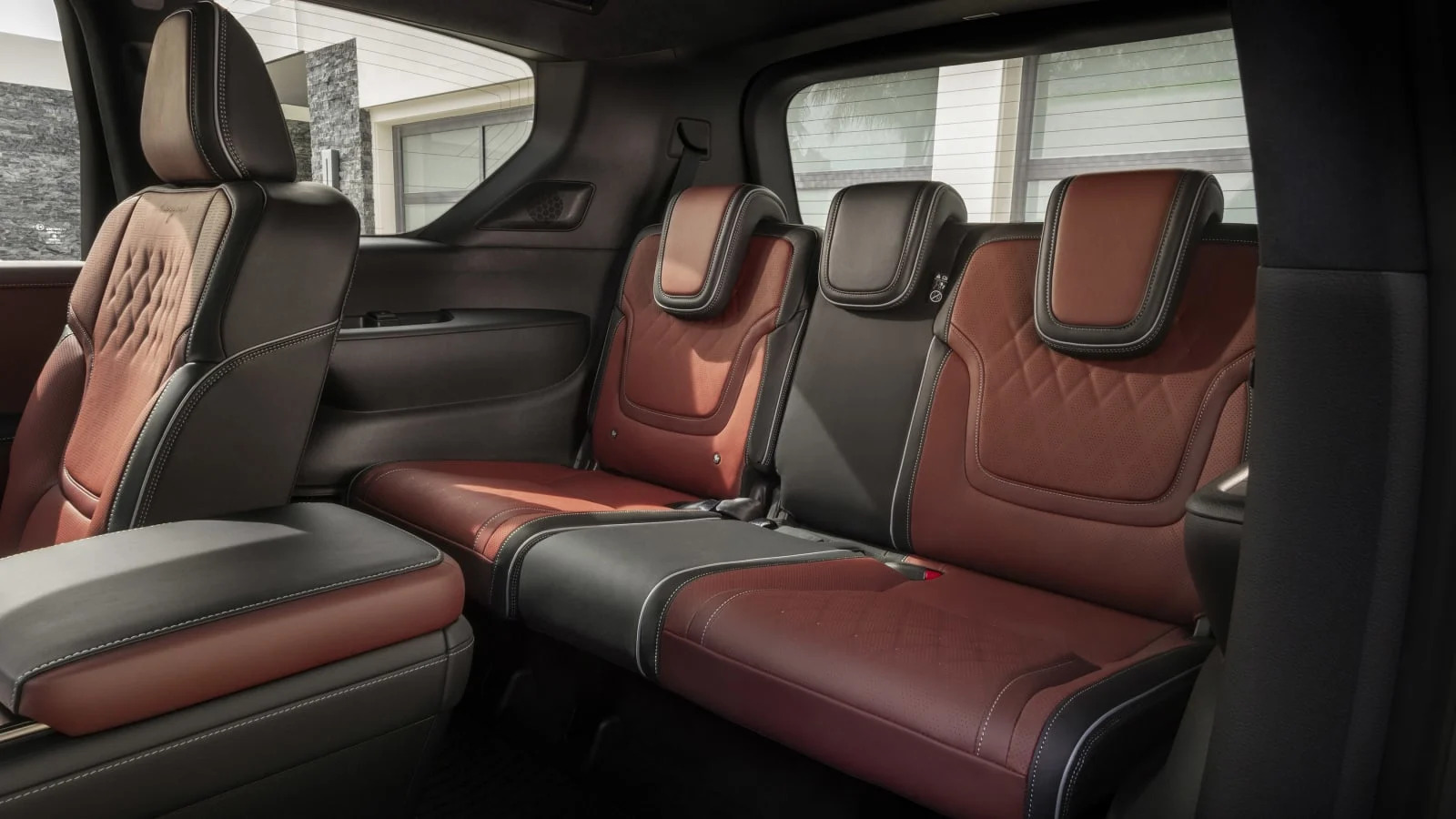
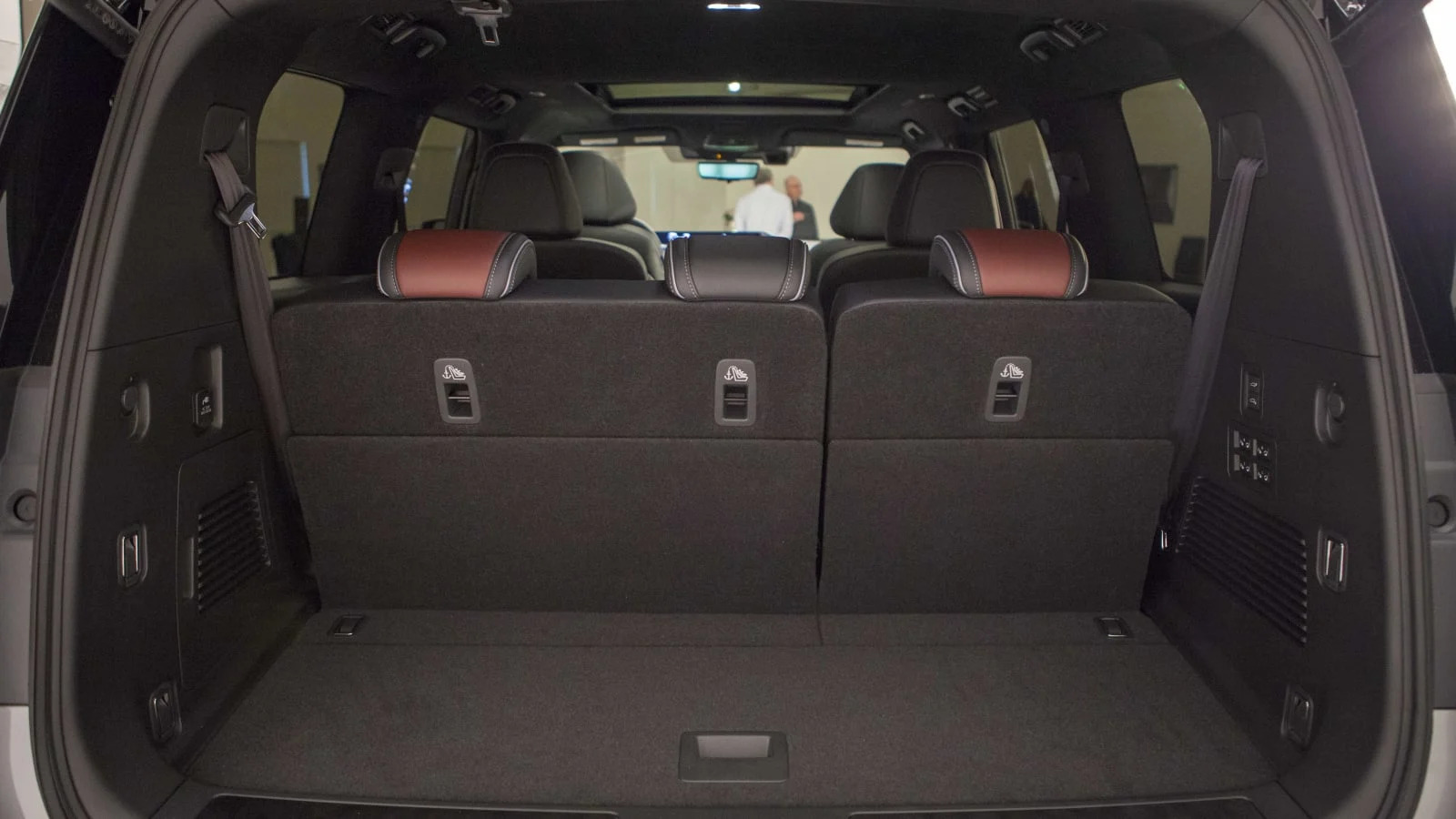
The excellent design continues inside with open-pore wood trim and aluminum accents, semi-aniline quilted leather seats and plenty of soft-touch surfaces. The seats are supremely comfy with all trims getting heated in all three rows. Most trims get cooled first- and second-row seats, and there is even an available massage function in the first and second rows. It’s not the most refreshing massage on the face of the planet, but massage is like pizza – even bad massage is still massage.
And it’s plenty roomy, too. The third row is actually comfortable for full-sized adults, which hasn’t been a given for full-size SUVs, and they even recline a bit. The second-row seats take a bit of time to move out of the way, but once they are moved forward, it’s easy enough to get into that third row. All rows get USB-C charge ports with up to 15 watts of power for quick device charging.
Dominating the dash are two 14.3-inch displays. The gauge cluster is configurable three ways, and the center display comes with Google Built-in. That means integrated Google Maps with greater functionality than the CarPlay norm, downloadable apps from Google Play, and voice control courtesy of Google Assistant. What’s really cool is that navigation directions, music and phone calls can be set to play just through the driver’s side headrest speaker, the most novel of 24 other speakers included with the Klipsch Reference sound system (Sensory and Autograph trims). Wireless Apple CarPlay and Android Auto are standard as well, but you won’t get the individual audio function.
Under the infotainment screen is a 9-inch touchscreen for HVAC and drive mode controls. This one uses haptic feedback to tell you you’ve successfully selected a feature, but it takes quite the stab to get it done – a light tap or swipe won’t do it. Just below this screen is the push-button transmission selector surrounded by a piano black surface. Be prepared for lots of fingerprints in this section of the dash.
However, my favorite feature here is the Autograph’s cooling center console box. It’s big enough for a six-pack of soda and tall enough to accommodate larger bottles of water and whatnot. The “Cool Box” available in the Lexus GX is much smaller. At the onset of my ride, I immediately put two bottles of Diet Dr Pepper inside the box and they were chilled to perfection within 15 minutes.
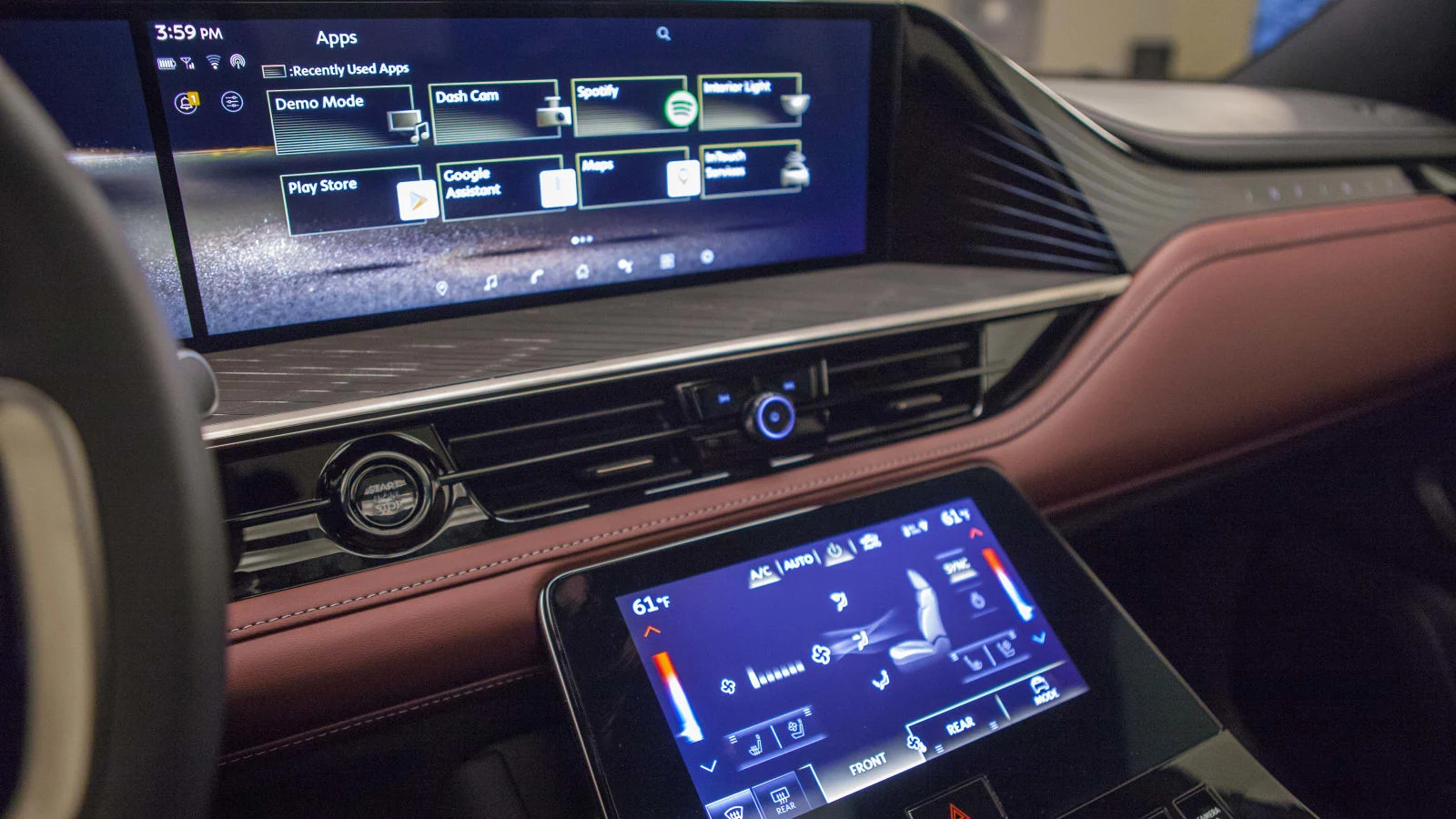
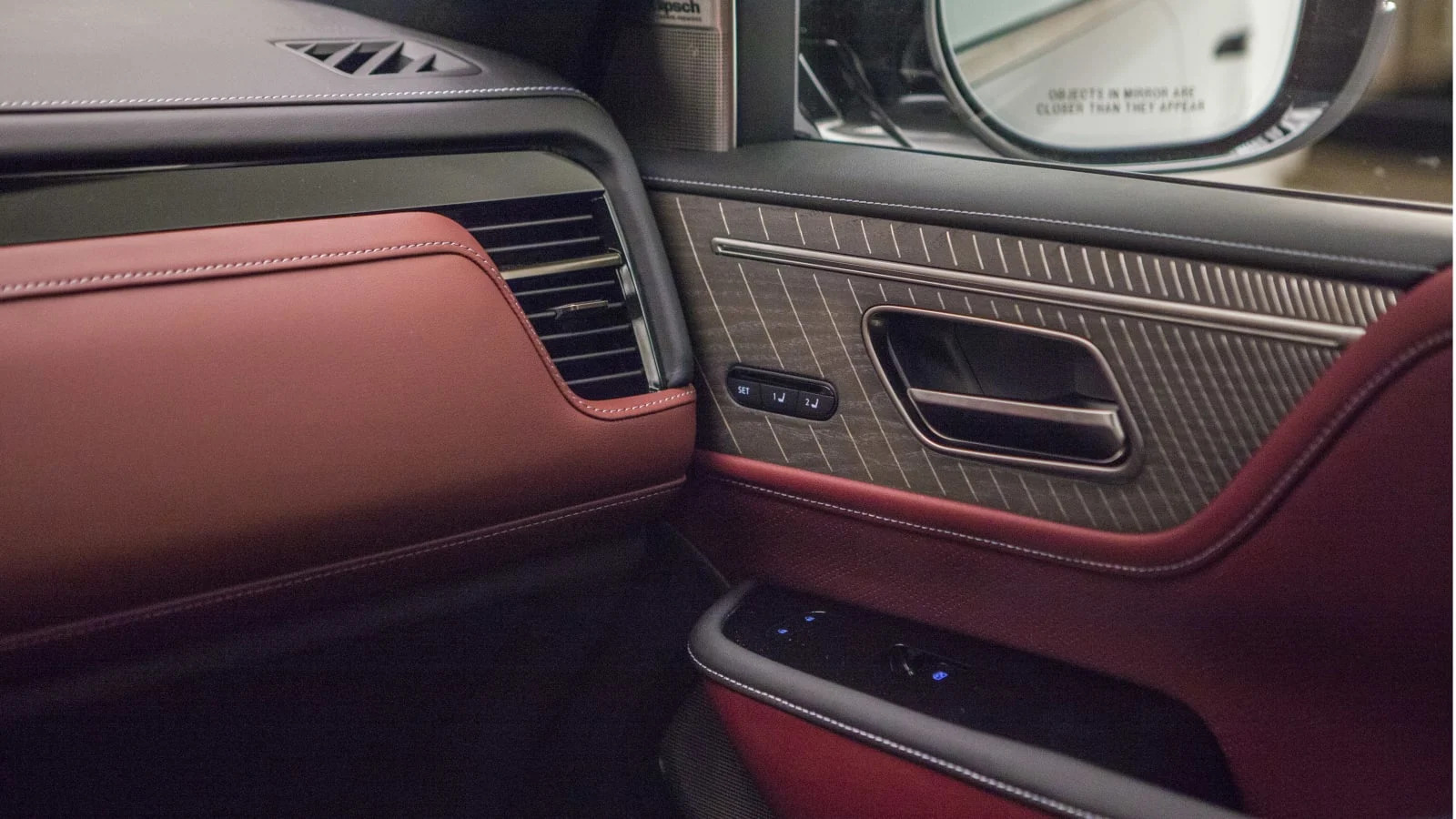
Although I question the utility of some of the QX80’s technology, I can’t deny the practicality of the 170-degree front wide view camera feature. In an Infiniti-designed demonstration, the camera was able to see a child’s bicycle hidden behind another SUV parked just forward and to my right. It was not visible to me in the driver’s seat. The tech is even more impressive when displayed across both screens.
Other cool camera tricks are an invisible hood feature that projects an image of what is under the car to the two interior screens as well as a 360-degree camera that can detect moving objects and comes with eight pre-selected viewing angles. I’m also here for the rear camera mirror, which provides a wide-angle video feed of the view behind the car directly to the rear view mirror. It’s particularly helpful when your rearview would otherwise be filled with the heads and luggage of passengers.
The QX80 Sensory and Autograph have a built-in dashcam that can automatically record any traffic events. Drivers can also manually hit the record button in case of, say, their friend making a fool out of themselves by dancing in front of the SUV to demonstrate the feature. Not that my friends would do that. My friends are more likely to use the in-car camera to take a selfie photo or record a podcast with the video recording feature. It’s certainly a neat little gizmo and you can access the camera through the Infiniti app and get an interior cabin look in real time. However, this still seems like novelty tech.
The least serviceable tech feature has got to be the biometric cooling also found in the top two trims. In theory this infrared sensor detects when a second-row passenger is overheated and automatically adjusts the zoned climate control to max cooling. I mean, it’s handy that the driver doesn’t have to do anything but how hard is it to just set the HVAC for 65 and hit the Auto button? Not very.
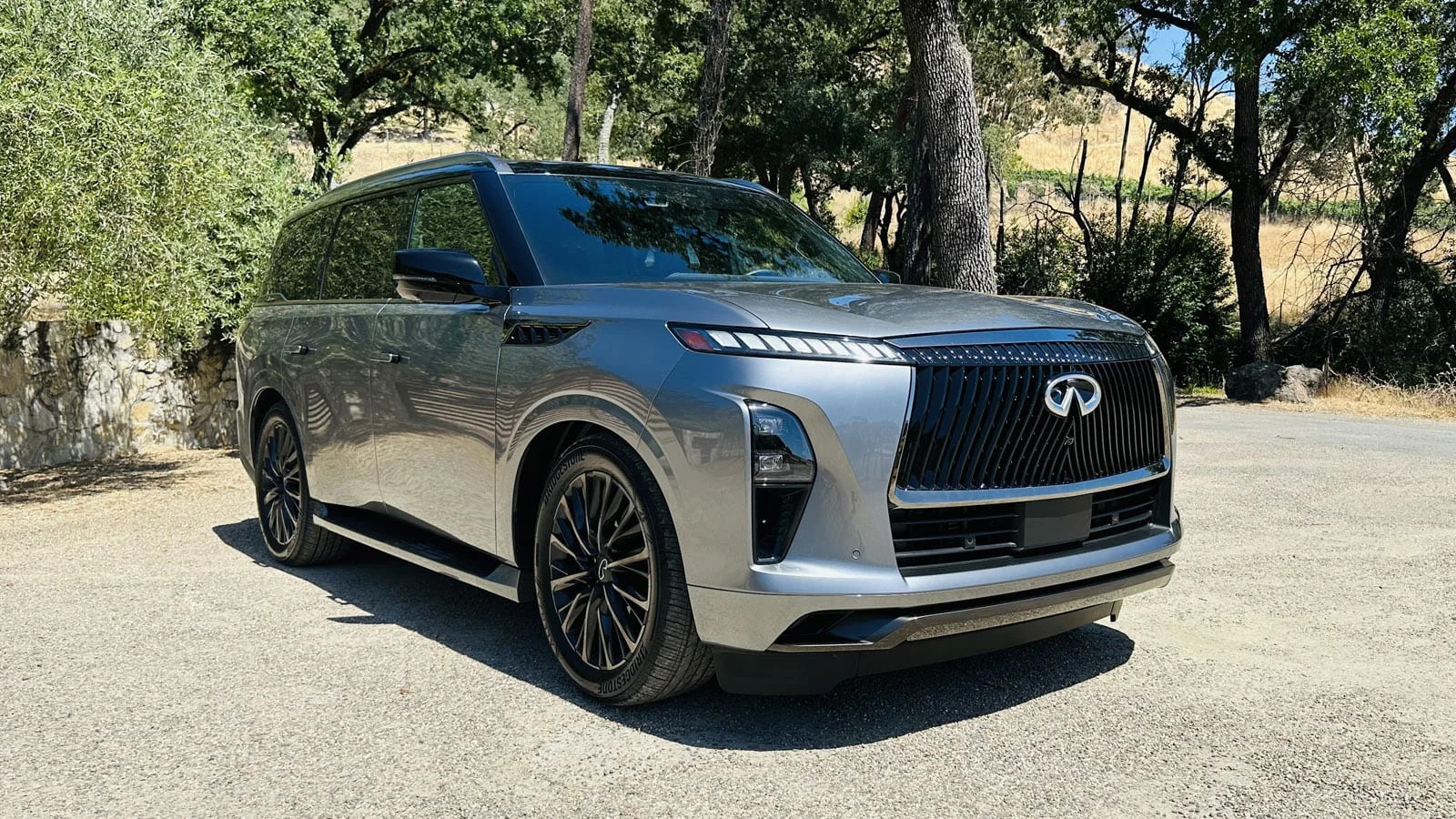
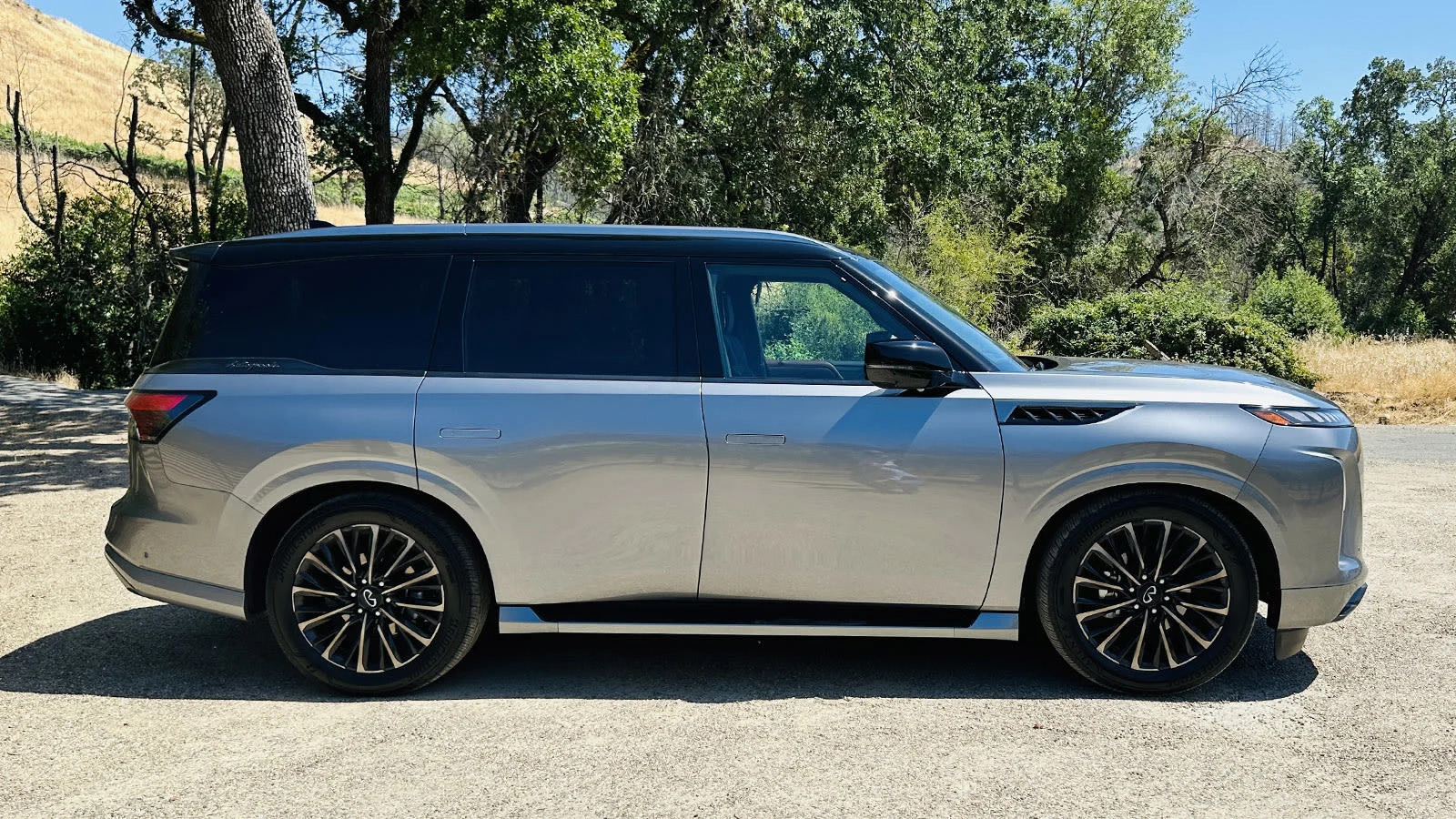
As for advanced driver’s aids, all the usual suspects are here, including blind-spot monitoring that works when towing a trailer up to 33 feet in length. ProPilot Assist is here in both hands-on and hands-off guise. The more advanced ProPilot Assist 2.1 even has a two-mode lane-change feature. The driver can initiate a lane change by signaling and then let the car make the steering and throttle inputs. However, I let the car decide when to change lanes based on surrounding traffic and my set speed. As the driver, I have to accept the lane change, but the maneuver is accomplished cleanly.
The QX80 can tow up to 8,500 pounds and cargo space has expanded considerably to better haul kids and their required detritus. Behind the third row is now 22 cubic-feet of space (quite a lot among full-size SUVs), expanding to 59 cubes with the third row folded flat, then to 101 with both rows folded. The air suspension can lower the QX80 nearly 3 inches for easy loading of cargo as well as passengers.
In all, I’m very impressed with the 2025 Infiniti QX80. Its design is stellar, the powertrain is on point, and the features and technology are all a huge improvement over the previous generation. I wish the ride quality were a bit more sorted, but that might be something the company can address in next year’s model or through an over-the-air update.



